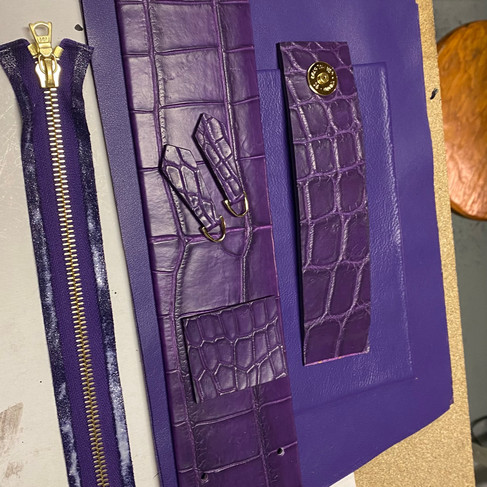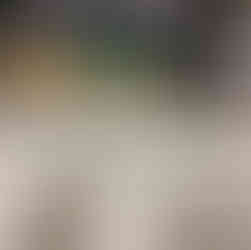Nichols London- Top Class Leather Goods & My Internship Experience
- Milosz Lech
- Jan 14, 2023
- 3 min read
Footwear and accessories often go hand in hand, with many companies having their own designers that specialize in both, so also having an understanding of how accessories are constructed can come in useful for footwear designers. In this read, I will be mentioning the kinds of things that I picked up during my month at Nichols London.
Week 1 (December 13-16)
Starting the week off- full of excitement- my first task was to prepare a zip pocket wallet, trying to be extra careful with the absorbent and light-coloured leather. Throughout the week I was also working on a wash bag in a beautiful antique croc which involved the 'piping' technique- something I had not previously carried out for accessories. Getting the grips of the new workshop, I also began preparing componentry in purple gator and lamb Nappa.
Week 2 (December 19-23)
The fun continued throughout the second week in which I started off by cutting out all components for the black crocodile wash bag, a hot product of Nichols London. The week also included a quick delivery trip across to George Cleverley on Old Bond Street, a very welcoming store in an equally beautiful part of London that I highly recommend visiting. Back in the workshop, I focused on continuing the two wash bags by folding the edges, cutting zips to the correct lengths, and sewing the bases to the side pieces.

On Friday, I was working on a small pochette bag as seen above. Made from alligator, this green is definitely one of the most beautiful leathers that I have ever seen, despite being fairly tough to cut- even with a brand-new scalpel blade.
Week 3 (January 3-6)
Belts and coasters: two of my favourite leather goods I have worked on while at Nichols London. The meticulousness of making belts here made me understand exactly why they are priced much higher than the standard ones you can take off a high-street store shelf. Having the risk of slipping my blade or edge paint onto the expensive leather is anxiety-inducing, to say the least, and, of course, I have made mistakes, however, I am grateful for them as each time counts as an opportunity to develop these skills. Coasters have such a basic shape that they seem impossible to mess up but the slightest mistake while burnishing or painting edges can break that perfectly round shape.
Week 4 (January 9-13)
Throughout the last week of the internship, I continued developing my belt-making skills; something I will for sure put to use for myself in the future. Something I will be taking with me from this internship is the orange trifold card wallet and card holder seen in the bottom-left photograph as Rory, the company owner, kindly allowed me to work on my own projects also.
In the bottom-right photograph, I show how piping is done. A thin cord gets placed in the middle of a thin, narrow, but long strip of leather which then is folded along the longer sides. The cord is pushed into place with a curved bone folder to achieve an even bump on one edge of the folded leather piece. Piping can provide a premium aesthetic for various products and because of the time and costs this can take, you rarely if never see the technique on cheap leather products and, if you do, it won't be made from high-end alligator.





































Comments